Grand Canyon National Park is one of the most iconic natural wonders in the United States, drawing millions of visitors each year with its breathtaking vistas and endless outdoor opportunities. For those planning a visit, navigating the vastness and complexity of the park can be overwhelming without the right guidance. This comprehensive trip planner breaks down everything you need to know—from choosing between the North and South Rims, to the best times to visit, where to stay, and must-do activities—so you can make the most of your Grand Canyon experience.
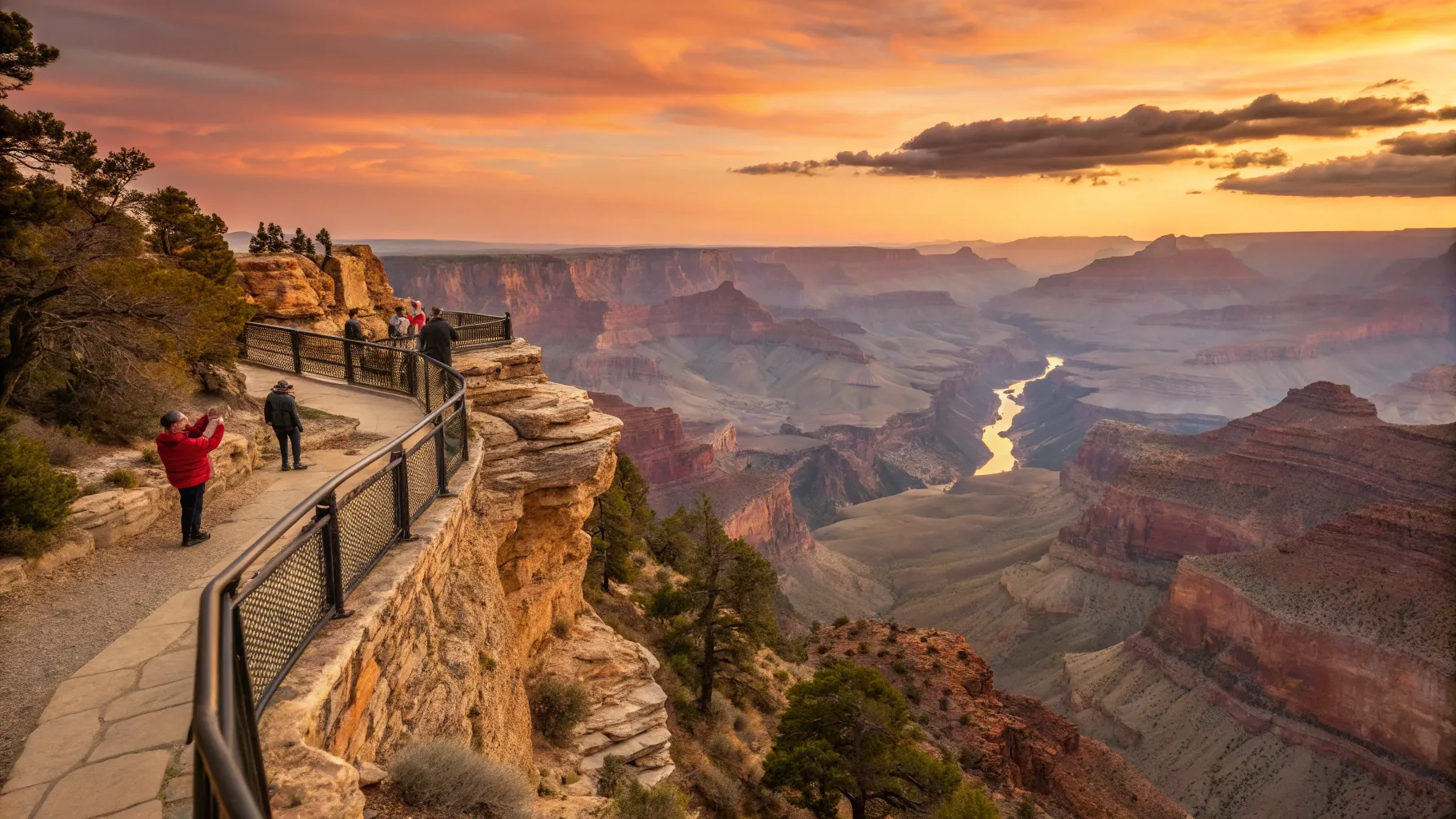
Understanding Grand Canyon National Park: An Overview
Spanning approximately 1.2 million acres, Grand Canyon National Park encompasses both the North and South Rims of the canyon, which are separated by the Colorado River running through the canyon floor. While many people think of the Grand Canyon as a single destination, the park is actually made up of multiple rims and areas, each offering a unique experience.
Besides the North and South Rims managed by the National Park Service, other notable areas include the West Rim, near Las Vegas and managed by a Native American tribe, the East Rim around Lees Ferry near Page, Arizona, and the Havasupai area, also managed by Native American tribes. This guide focuses on the North and South Rims, the heart of the National Park where most visitors spend their time.
Located in the northwestern corner of Arizona, the park borders Utah and Nevada, with Zion National Park just to the north, making it part of a rich network of stunning landscapes in the Four Corners region. Established in 1919, Grand Canyon National Park is one of the earliest national parks in the United States and consistently ranks among the most visited, with visitation numbers hovering between four to five million annually.
Despite its popularity, many visitors only glimpse the canyon from the rim before moving on. This guide encourages you to delve deeper, exploring trails, viewpoints, and experiences beyond the familiar overlooks to truly appreciate the grandeur of the area.
North Rim vs. South Rim: Which Should You Choose?
One of the most common questions travelers face is deciding between the North Rim and South Rim. These two rims offer vastly different experiences, and understanding their contrasts is key to planning your visit.
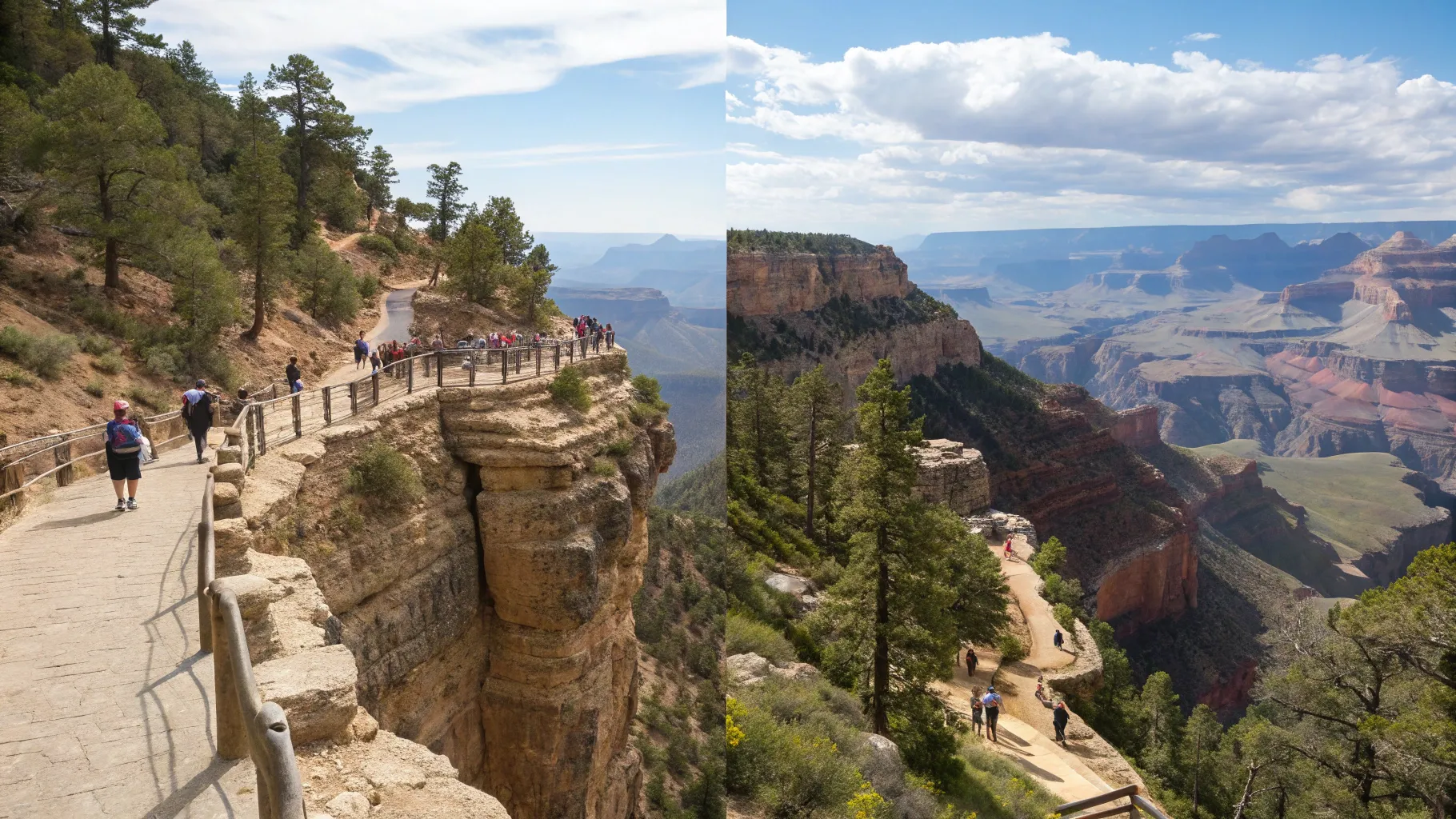
The South Rim: Bustling and Accessible
The South Rim is by far the most popular and developed side of the Grand Canyon. It receives the majority of visitors and offers a plethora of amenities including numerous hotels, restaurants, and well-maintained hiking trails. The South Rim is also equipped with a shuttle system that helps visitors navigate the park, though some shuttle routes are mandatory during peak seasons to control traffic and parking.
Popular trails such as the South Kaibab Trail and Bright Angel Trail provide stunning access down into the canyon, while a variety of viewpoints along the rim offer diverse perspectives of the canyon’s vastness. The South Rim’s infrastructure and accessibility make it ideal for families, first-time visitors, and those looking for a range of activities and convenience.
The North Rim: Quiet and Serene
In contrast, the North Rim is much quieter, receiving only about 10% of the park’s visitors. It features a lodge, a small number of restaurants, and a campground, but overall offers a more intimate and less commercialized experience. The North Rim sits about 1,000 feet higher in elevation than the South Rim, resulting in a cooler climate and a more forested landscape with larger trees and heavier vegetation.
Hiking opportunities exist here as well, with the North Kaibab Trail being a notable route descending into the canyon. The scenic drive along the North Rim provides access to spectacular viewpoints like Cape Royal and Angel’s Window, an arch that offers vertigo-inducing views. The North Rim’s solitude and natural beauty appeal to visitors seeking a peaceful retreat away from the crowds.
Choosing Your Rim
Ideally, visitors should aim to explore both rims to experience the full diversity of the Grand Canyon, which can be done in about four to five days. However, the rims are separated by approximately a four-hour drive, so logistics and timing often require a choice.
For first-time visitors or those with limited time, the South Rim is generally recommended due to its accessibility, variety of activities, and iconic views. The North Rim is perfect for those who prioritize tranquility and a more immersive natural experience. Whichever you choose, each rim offers a unique window into the awe-inspiring canyon.
When to Visit Grand Canyon National Park
Timing your visit is crucial, as the South Rim is open year-round while the North Rim operates seasonally from mid-May through October. Winter visits to the South Rim bring colder temperatures and occasional snow, requiring preparation such as traction devices for icy trails. However, winter also means fewer crowds and a more peaceful experience.
The North Rim closes during winter due to heavy snowfall and road closures but offers a cooler escape during the hot summer months at the South Rim. For detailed month-by-month expectations, including what’s open and potential closures, visitors can consult specialized guides to help decide the optimal time for their trip.
How Many Days Should You Spend at the Grand Canyon?
The length of your stay will shape your experience. If you want to explore both rims thoroughly, plan for at least four to five days. The North Rim offers about one and a half to two days’ worth of activities, while the South Rim can easily fill three days with hiking, sightseeing, and cultural experiences.
If your schedule permits only one or two days, focus on a single rim and maximize your time there. For the South Rim, two days is the minimum recommended to avoid feeling rushed and to enjoy the diverse offerings. The North Rim can be appreciated in one day, but two days allows for a more relaxed pace.
Where to Stay: Lodging Options at the Grand Canyon
South Rim Accommodations
The South Rim offers a variety of lodging options both inside the park and in nearby towns. Tusayan, a small town just outside the park entrance, is a popular choice for its affordability and convenience. Staying here can help avoid the higher prices and limited availability inside the park while still being close to the action.
Within the park, the Grand Canyon Village area hosts several iconic lodges such as El Tovar, known for its historic architecture and prime canyon-edge location. Other options include Kachina Lodge, Thunderbird Lodge, and Bright Angel Lodge, all offering different price points and proximity to the rim.
For campers, Mather Campground near Market Plaza and Desert View Campground near the East Entrance provide opportunities to stay immersed in nature, though Desert View requires a longer drive to reach main South Rim attractions.
North Rim Accommodations
The North Rim has fewer lodging options, with the Grand Canyon North Rim Lodge being the main hotel facility located right on the canyon edge. Adjacent to it is a campground for those wishing to camp.
Outside the park entrance, Kaibab Lodge and Demotte Campground are privately owned options closer to the North Rim than Jacob Lake, a small truck stop with a hotel about 45 minutes away, which is generally a less desirable lodging location due to the distance.
For more remote experiences, cabins and dispersed camping in the surrounding Kaibab National Forest and areas like Toroweap offer rustic alternatives but require more planning and preparation.
Essential Activities and Experiences at the Grand Canyon
South Rim Highlights
The South Rim shines with its extensive hiking trails, shuttle-accessible viewpoints, and cultural sites. Hiking is the best way to experience the canyon’s grandeur up close, but visitors should prepare for the strenuous nature of the trails, especially when descending and climbing back out of the canyon.
The South Kaibab Trail is a favorite for its steep descent and constantly changing vantage points. Short hikes to points like Ooh Aah Point or Cedar Ridge offer dramatic views without committing to a full-day trek. The Bright Angel Trail is another popular route, known for its historic significance and relative accessibility.
Shuttle tours to Hermit’s Rest provide a convenient way to see multiple viewpoints without driving, with the shuttle running along a scenic route featuring spectacular overlooks. Desert View Drive offers a self-driven scenic experience with several unique viewpoints and the historic Desert View Watchtower.
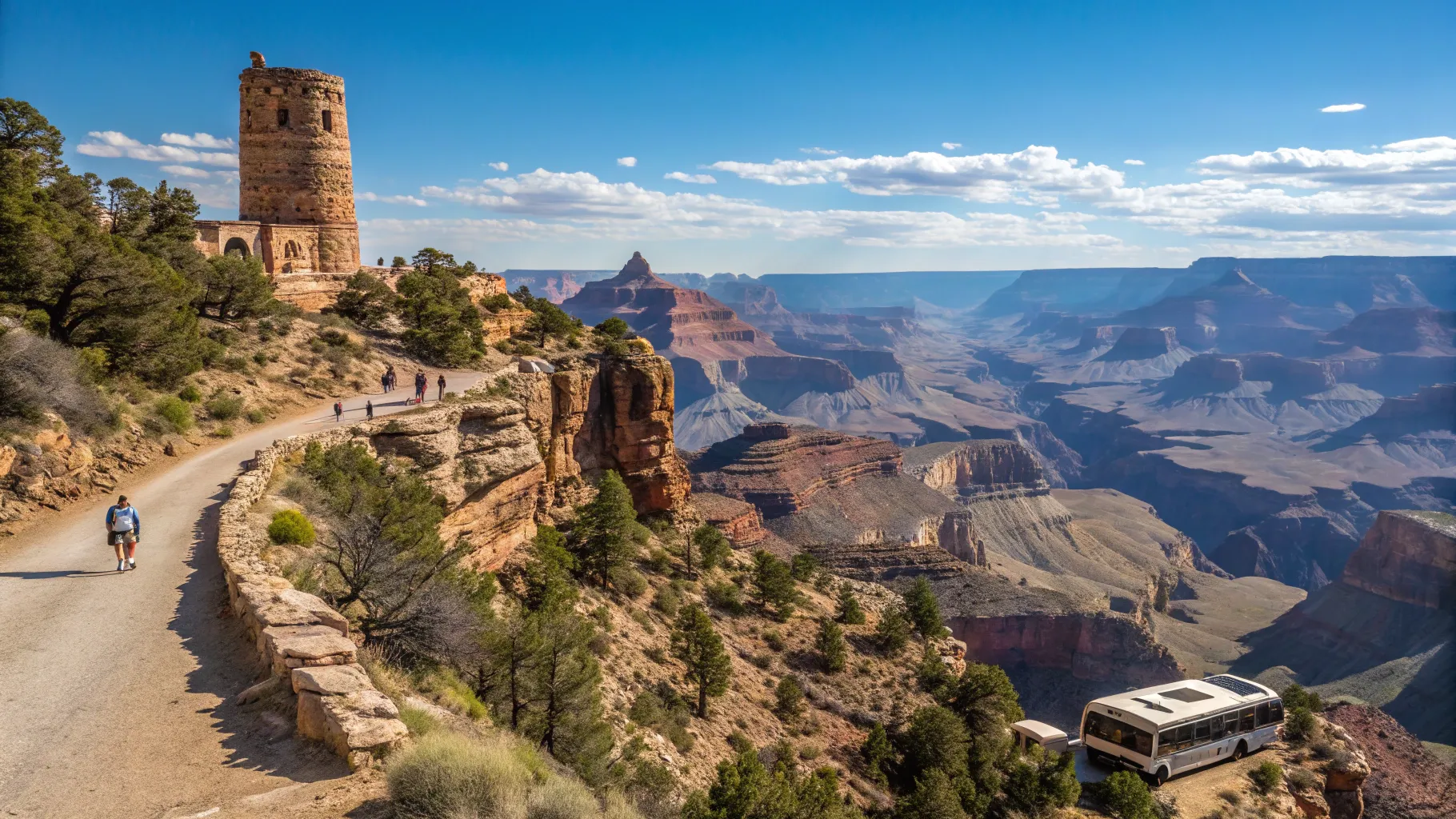
North Rim Highlights
The North Rim offers a more tranquil experience with standout activities such as the Bright Angel Point Trail, a short walk to an impressive viewpoint. Imperial Point, the highest accessible point in the park, offers expansive views from a lofty vantage.
The scenic drive to Cape Royal and Angel’s Window reveals unique rock formations and panoramic canyon views. Hiking the North Kaibab Trail provides a taste of canyon descent, with short hikes like the Coconino Overlook offering manageable yet rewarding excursions.
Experiencing the Canyon Floor
For the adventurous, staying at Phantom Ranch on the canyon floor is a rare opportunity, though obtaining lodging requires entering a highly competitive lottery system 15 months in advance. Campgrounds along the trails provide additional options for overnight stays below the rim.
Planning a Typical Day at the Grand Canyon
To truly capture the canyon’s beauty, visitors should aim to be at viewpoints during sunrise or sunset when the canyon’s layers and colors are most vivid. Midday light often washes out the intricate geology, making early mornings and evenings ideal for photography and quiet reflection.
Arriving early also helps avoid the crowds and shuttle wait times, which can stretch to 30-60 minutes during peak hours, especially at the South Rim. Understanding the shuttle system is critical to navigating the park efficiently. There are four shuttle lines, some mandatory depending on the season and destination, and mastering their routes can save time and reduce frustration.
Shuttle System Overview
- Purple Line: Connects Tusayan to the Visitor Center; optional for most visitors.
- Blue Line: Circulates within the Village area, connecting lodging, campgrounds, and restaurants; optional but convenient.
- Red Line: Mandatory shuttle to Hermit’s Rest during peak seasons; private vehicles are not allowed.
- Orange Line: Required for access to the South Kaibab Trailhead; includes a Hiker’s Express Shuttle for early morning hikers.
Key Travel Tips for Your Grand Canyon Trip
One of the most important considerations when planning a Grand Canyon visit is the extreme temperature fluctuations. The rim’s temperatures can range from 70-90°F during peak seasons, but as you descend into the canyon, temperatures can soar to 95°F or higher, especially in summer months.
This drastic change means visitors must be prepared with ample water, sun protection, and appropriate clothing layers. Dehydration is a common risk, so carrying sufficient water and pacing yourself on hikes is essential for safety.
Additionally, if visiting in winter or early spring, be prepared for icy conditions on trails and roads, particularly on the South Rim. Yak tracks or microspikes can provide traction for icy hikes.
Enhance Your Grand Canyon Experience
Whether you’re planning a multi-day exploration or a quick trip, integrating your visit with nearby Southern Utah destinations can enhance your adventure. Southern Utah offers a wealth of natural beauty and unique experiences, from the red rock wonders of Zion National Park to the hoodoos of Bryce Canyon.
Consider basing yourself at a comfortable vacation rental to rest and recharge after days of hiking and sightseeing. For travelers looking to stay near the Grand Canyon and explore Southern Utah’s treasures, Stay Copper Rock’s Grand Canyon vacation rentals provide an excellent home base with access to both the Grand Canyon and nearby national parks.
For more ideas on exploring Southern Utah and planning your trip, explore related guides such as our Top 5 Must-Do Activities in Southern Utah and Favorite Vacation Rentals Near Zion National Park. These resources offer insider tips and hidden gems to enrich your journey.
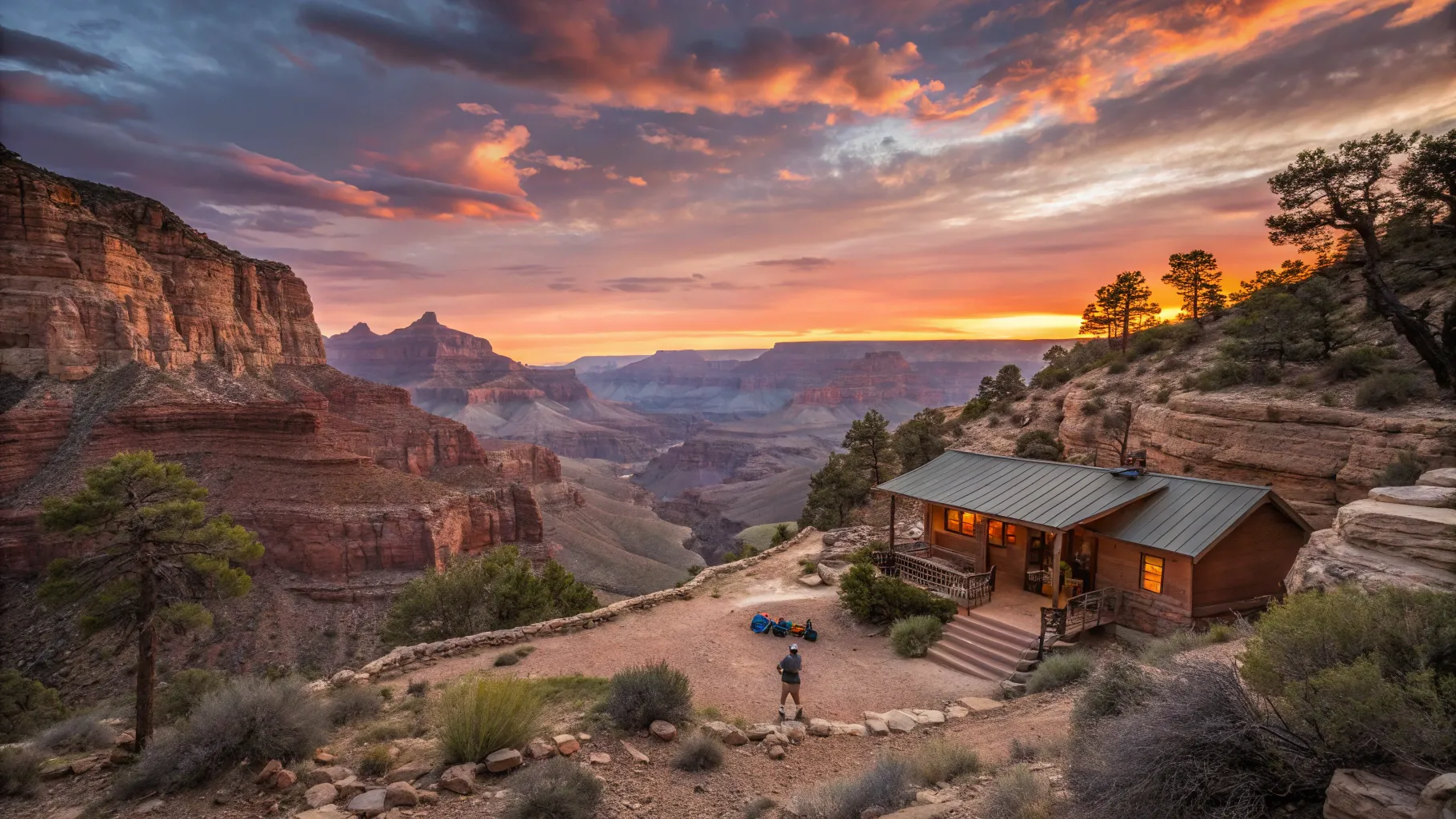
Frequently Asked Questions
Which rim of the Grand Canyon is best for first-time visitors?
The South Rim is generally the best choice for first-time visitors due to its accessibility, amenities, and variety of activities. It offers iconic views and well-maintained hiking trails suitable for visitors of all skill levels.
When is the best time to visit the Grand Canyon?
The best time depends on your preferences. The South Rim is open year-round, with spring and fall offering mild weather and fewer crowds. The North Rim is open from mid-May to October and is cooler during summer months, making it a great escape from heat.
How many days should I spend at the Grand Canyon?
To experience both rims fully, plan for at least four to five days. If limited on time, two to three days at the South Rim or one to two days at the North Rim can still provide a memorable visit.
Are there lodging options inside the Grand Canyon National Park?
Yes, both rims have lodging inside the park. The South Rim has several lodges and campgrounds within Grand Canyon Village, while the North Rim features the Grand Canyon North Rim Lodge and a campground. Availability is limited, so book well in advance.
Can I hike from the North Rim to the South Rim?
Yes, it is possible to hike between rims via trails that descend to the canyon floor and ascend the opposite rim. However, this is a strenuous multi-day endeavor requiring careful planning, permits, and preparation.
What should I pack for a Grand Canyon trip?
Pack layers for temperature changes, sturdy hiking shoes, sun protection, plenty of water, snacks, and a camera. If visiting in winter, include traction devices for icy trails. Always carry a map and know your hiking limits.
Final Thoughts
Planning a trip to Grand Canyon National Park is a rewarding endeavor that, with the right preparation, can lead to a truly unforgettable adventure. Whether hiking down into the canyon, exploring forested rims, or simply soaking in the spectacular views during sunrise or sunset, the Grand Canyon offers experiences that stay with visitors forever.
For travelers seeking a comfortable base near the park, consider exploring the range of vacation rentals offered by Stay Copper Rock. These rentals combine convenience and luxury, allowing you to relax after your explorations and prepare for the next day’s adventures.
To deepen your Southern Utah journey, check out additional travel guides and accommodations on Stay Copper Rock, helping you discover the best of Zion, Bryce Canyon, and beyond.

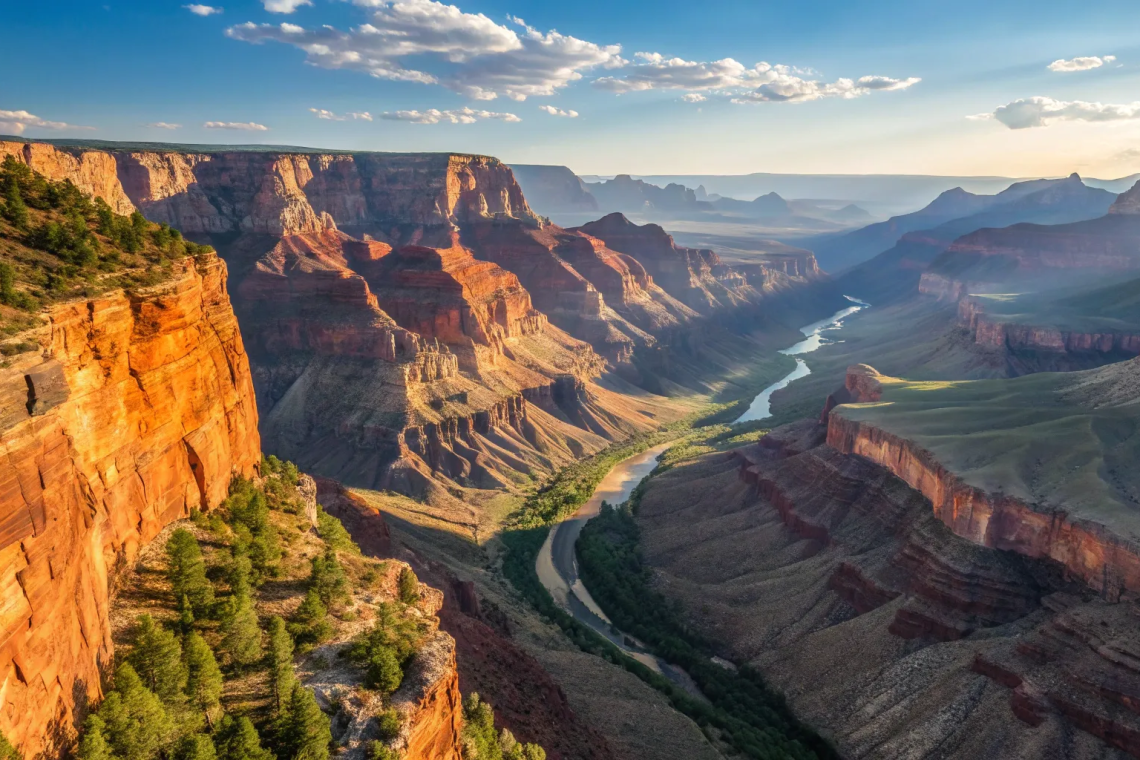




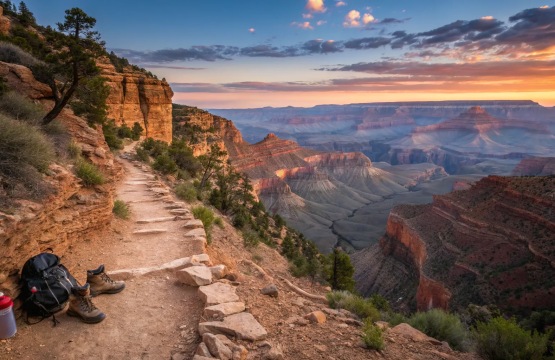
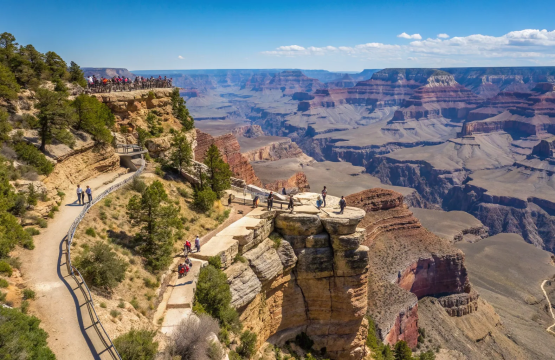
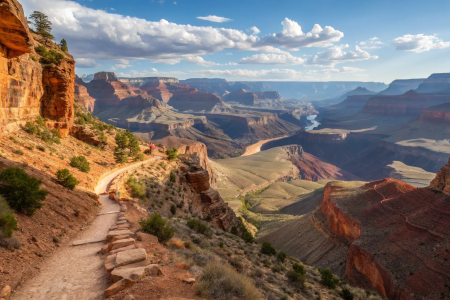
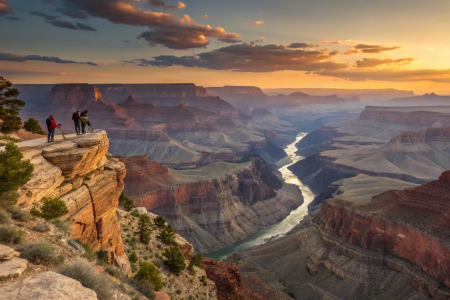
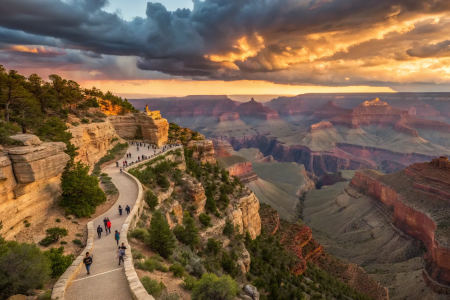

Join The Discussion